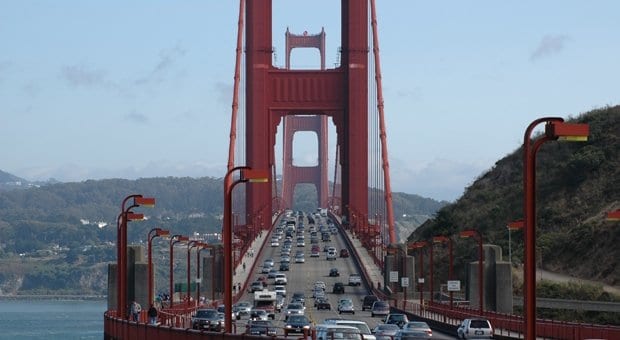
California State Route 1 shares the Golden Gate Bridge in San Francisco with US Route 1. Credit: Henner Zeller
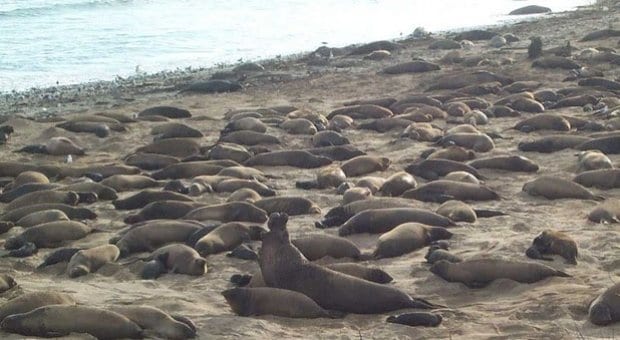
Elephant seals at Año Nuevo State Reserve. Credit: Dave Pape
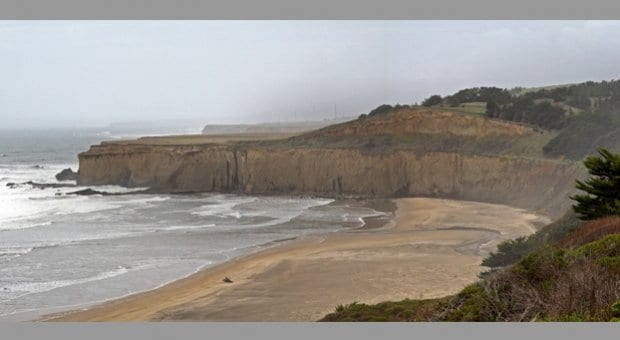
Half Moon Bay. Credit: Sanjay Acharya
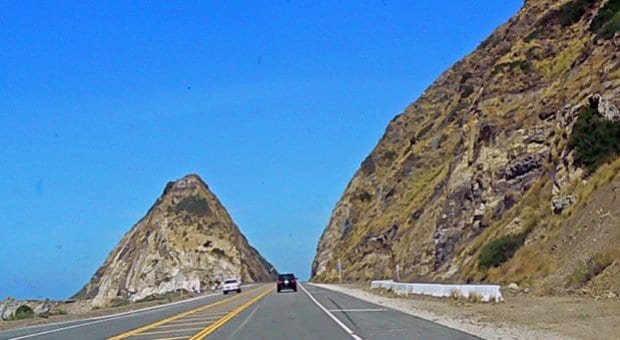
Mugu Rock at Point Mugu is a famous part of the highway often featured in car commercials. Credit: Tim Pearce
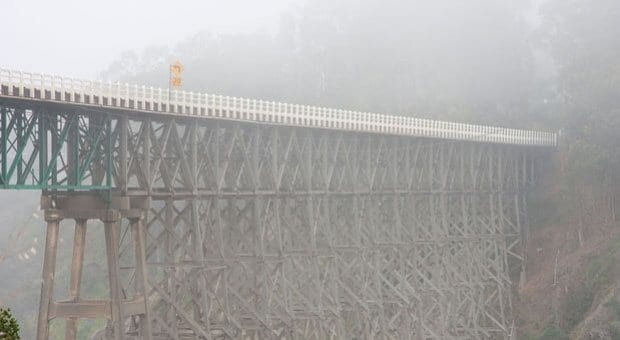
Albion River Bridge is the last remaining wooden trestle bridge on Route 1. Credit: David Eppstein
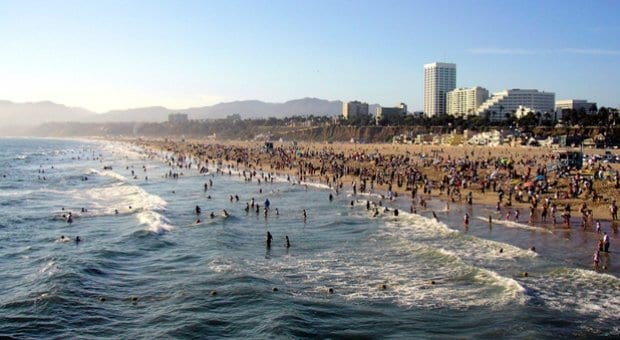
Santa Monica Beach. Credit: Dehk
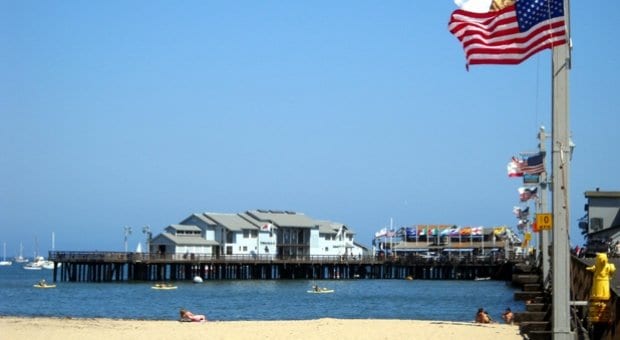
Stearns Wharf in Santa Barbara. Credit: D Ramey Logan
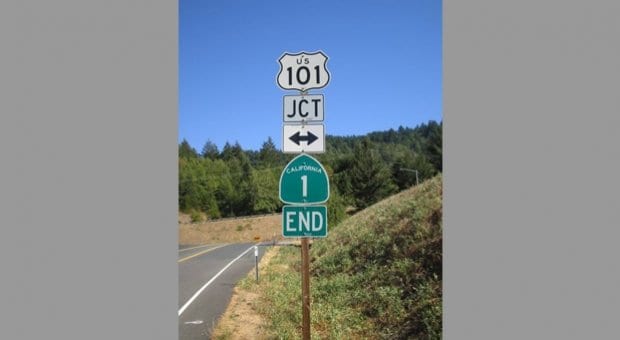
The north end of Route 1, in Leggett. Credit: Paul Van Brenk
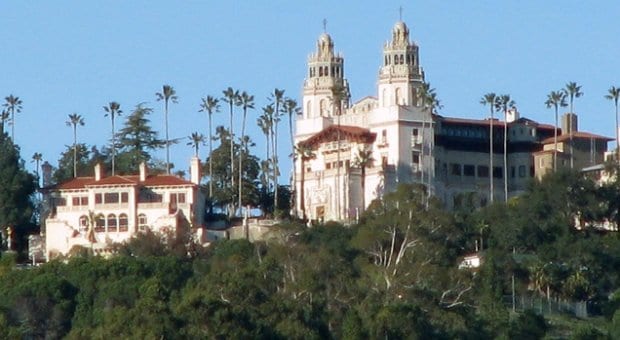
Hearst Castle, as seen from Route 1. Credit: Durova
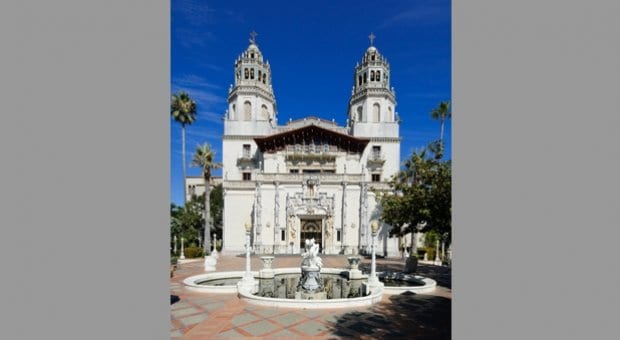
Casa Grande is the centrepiece of Hearst Castle. Credit: King of Hearts
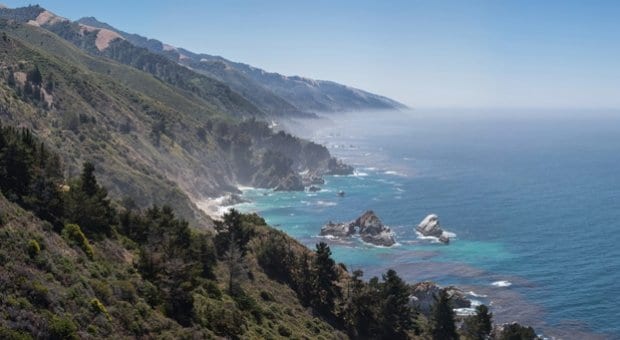
McWay Rocks and McWay Cove. Credit: David Iliff
San Francisco and Los Angeles may be among the world’s top LGBT travel destinations, but there’s much more to California than The Castro and West Hollywood. With its lush scenery, sparkling blue ocean and quirky seaside towns, the Pacific Coast Highway route between these two cities can form the spine of a wonderful adventure on which journey is the destination.
The highway takes many different names along its route — Route 1, US 101, Coast Highway, Shoreline Highway, Cabrillo Highway — but by any marker it’s one of the most scenic drives in the United States. The best way to approach the route is by car, allowing for stops along the way whenever the scenery captures your fancy. Experienced cyclists can also conquer the route by bicycle. In both cases, travelling south is the better option — you’ll get better views driving along the coast, and the prevailing winds will be in your favour.
By car, you can complete the San Francisco to LA route in a single day, but it’s best to give yourself two or three days to allow you to make the most of stops along the way.
Your journey begins before you leave San Francisco. The iconic Golden Gate Bridge is actually a part of Route 1, and the best way to experience the 2.7-kilometre bridge is on foot or by bicycle. For a different perspective, hop aboard a Blue & Gold Fleet bay cruise at Pier 39, which will take you right underneath the bridge while explaining the fascinating history of its construction. Once you’re back on land, indulge in the touristy shops and restaurants along the pier.
Your first stop along the way should be the Año Nuevo State Park, in San Mateo County, home to a large colony of marine mammals, including elephant seals, sea otters and sea lions. The best time to visit is during the winter months, from December to March, when the seals arrive for mating season. Hundreds of thousands of visitors stop by every year for guided tours to watch male seals fight for dominance and female seals give birth. Reservations are strongly recommended during this period.
Another more casual elephant seal refuge is further south along the highway, near Piedras Biancas Light. You’ll see signs for a lookout over a cliff down to the seal colony.
The highway bypasses the Monterey Peninsula, but it’s worth turning off to visit Monterey’s historic Fisherman’s Wharf and Cannery Row, a street of repurposed factories named for the Steinbeck novel. The nods to California’s maritime history and ecology include America’s only remaining whalebone sidewalk and one of the country’s largest aquariums. On a three-day journey, Monterey or the nearby artist colony of Carmel are good places to spend the night.
South of Carmel, you enter Big Sur country, a sparsely populated region known for its stunning views of and from the Santa Lucia Mountains, which rise dramatically from the ocean. Along this 160-kilometre stretch, the highway alternately runs right along the coast or along sheer cliffs up to 300 metres above the water. Drive carefully — it’s easy to get distracted by these gorgeous open vistas. Luckily, there are strategically placed turnoffs to stop and snap pictures of the best views. Be sure to take note of the picturesque Bixby Creek Bridge, one of the tallest single-span concrete bridges in the world.
About halfway through this stretch, you’ll find the tiny hamlet of Lucia and the roadside Lucia Lodge. The meals on offer here are only so-so, but the cliffside patio overlooking a crystal-blue bay is the main attraction.
The Big Sur region has little in the way of amenities, but that can be part of its charm. As long as you stock up on supplies before you go in — fill up your gas tank before you leave Carmel — the Big Sur River Valley is a great spot away from the bustle of the cities to rent a rustic cabin or pitch a tent for the night. As accommodations are limited in the region, be sure to book ahead.
Next on your itinerary is the must-see Hearst Castle in San Simeon. Built by publishing magnate William Hearst, on whom the film Citizen Kane was based, the sprawling 90,000-square-foot estate is a pastiche of styles inspired by — and in some cases, structures imported wholesale from — Hearst’s travels in Europe. The building houses thousands of antiques and artifacts from Hearst’s private collection, all of which was donated to the state of California after his death. There are several tour options elaborating various aspects of the grounds, including the gardens and the grand rooms.
The highway veers inland slightly to San Luis Obispo, a sleepy town in a scenic valley. Even if you’re not staying the night — but you really should — stop in at the Madonna Inn, a lavishly adorned motel with 110 uniquely themed rooms, including Love Nest, Rock Bottom or Cayucos Queen. Check out the rock-waterfall urinal in the men’s bathroom.
While visiting San Luis Obispo, wander its quaint downtown with its pedestrian-only streets. Don’t miss the famous Bubblegum Alley on Higuera Street, where the walls are lined with thousands of pieces of chewed gum. Be sure to leave some of your own behind. San Luis Obispo also makes a good base for an afternoon exploring the Edna Valley wine region, with its increasingly popular small wineries.
Your next major stop is Santa Barbara, a popular destination for its well-preserved Spanish colonial architecture and wharf, sandy beaches and luxury attractions. Take in the view from the Santa Barbara Courthouse tower, check out the brown pelicans at the end of Stearns Wharf, and head up to Arroyo Burro Beach to bathe in the sun. A few miles west is More Mesa Beach, popular with nudists and gays.
You’ll enter Los Angeles County through the seaside resort Malibu, where the highway hugs the beach for the entire town’s length. Some of the county’s most beautiful beaches are here, as is one of California’s most famous surf spots, in Malibu Lagoon. A short drive through Highlands Park will bring you to one of the best seaside views in LA county. From the cliff, you’ll be able to see as far as Palos Verdes and watch surfers and dolphins below.
You’ll enter Los Angeles proper via Santa Monica. After your time on the road, it’s worth unwinding in the capital of the gay party scene, West Hollywood. The centrally located Ramada Inn WeHo has surprisingly posh rooms right on Santa Monica Boulevard, a stone’s throw from the best gay bars and clubs, as well as the live comedy and music scene up on Sunset Boulevard. Fubar (7994 Santa Monica Blvd) also hosts a weekly queer comedy night on Fridays. And in the morning, make up for all that partying with a little history. Out & About Tours offer bus and walking tours of LA’s LGBT history. Tours take you through downtown or Hollywood to reveal the stories of America’s first gay rights pioneers.
From LA, the Pacific Coast Highway continues on to Orange County, where other highways can take you further into San Diego and onward to Mexico. Or you can head east to explore the inland mountains, deserts and forests. Indeed, with enough time and a car, the possible routes to explore the Golden State are endless.
For the most up-to-date travel information on gay San Francisco, see our City Guide, Listings Guide, Events Guide and Activities Guide.
For the most up-to-date travel information on gay Los Angeles, see our City Guide, Listings Guide, Events Guide and Activities Guide.
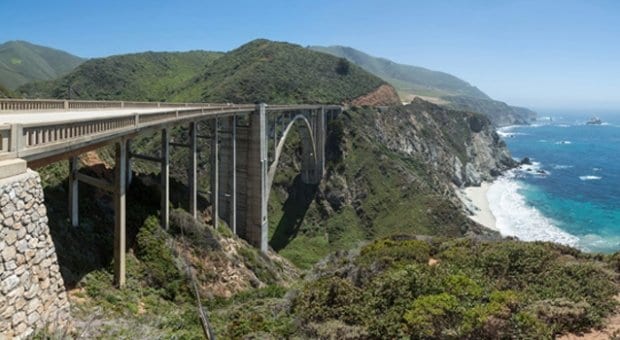

 Why you can trust Xtra
Why you can trust Xtra